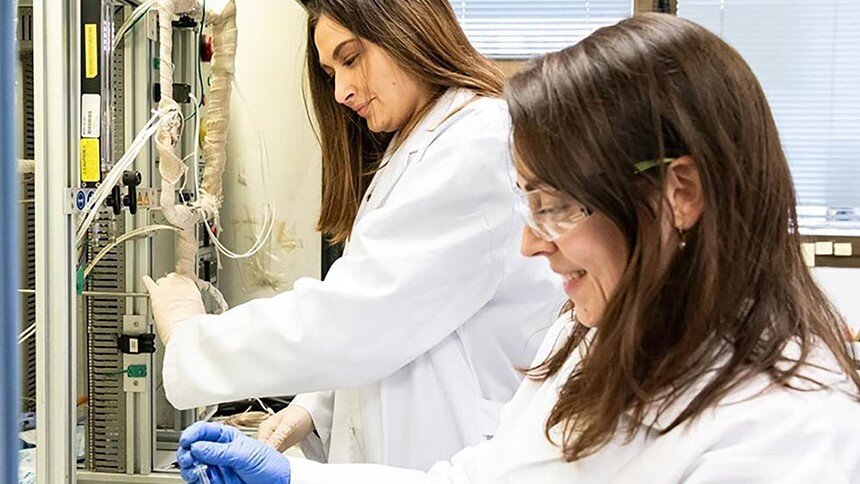A research group at the Institute for Molecular Science (ICMol), located at the University of Valencia Science Park, has synthesized a new material consisting of dinuclear palladium-gold entities. This material, extraordinarily efficient in the purification of ethylene, will facilitate the industrial production of polyethylene, a material widely used in countless everyday products. The work has been patented and published in the journal Nature Catalysis, and is an example of collaboration between different research institutions
Ethylene is the first organic compound produced worldwide - about 100 million tons per year - and is the basis for a multitude of commonly used chemicals, such as polyethylene. Bags, toys and kitchen cling film are made of polyethylene. To obtain it, ethylene is purified using a catalyst.
Purified ethylene is essential for preparing the compounds that follow it in the chemical value chain, such as polyethylene, the second most produced plastic worldwide. This purification requires a catalyst that favors the process, since crude ethylene contains 1% acetylene, which makes polymerization impossible and must therefore be hydrogenated to ethylene. For this reason, the reaction must be kept in a very strict temperature range to avoid an unexpected temperature increase.
Ethylene purification is the second largest volume reaction worldwide in organic chemistry. Bags of all kinds, packaging, pipes are objects made of polyethylene, which accounts for about 15% of the nearly 400 million tons of plastics produced in 2021.
The new catalyst could be used in industrial plants for ethylene purification once the scale-up of the material's synthesis is developed
Thus, in this project a well-defined palladium catalyst has been developed, inserted in a solid metal-organic framework (MOF), which allows much better control of the temperature range of the reaction and stops any secondary reaction, allowing the reaction to be carried out under industrial conditions in a safer and more efficient way, avoiding the safety and cost problems associated with the current industrial process.
The new catalyst performs the entire purification process on a single palladium atom bonded to a single gold atom, which modifies the activity of the palladium to make it more efficient and selective and thus able to work in a temperature range of almost 100 degrees Celsius, compared to 50 degrees Celsius for current catalysts. In addition, due to the small pore size of the MOF, undesired acetylene polymerization processes are controlled.
The new catalyst, which has been patented, describes the synthesis of the new MOF material and its excellent catalytic activity in the reaction of acetylene hydrogenation in ethylene streams. The co-ownership of this patent corresponds to both the Universitat de València and the CSIC and the UPV, in an example of collaboration between different research institutions
According to the team, the new catalyst could be used in industrial plants for ethylene purification once the scale-up of the material's synthesis is developed.
The work, recently published in the journal Nature Catalysis, involves the Institute of Molecular Science (ICMOL), located at the University of Valencia Science Park, the Institute of Chemical Technology (ITQ), the University of Cadiz, the CELLS-ALBA synchrotron and the University of Calabria (Italy).
The new catalyst, which has been patented, describes the synthesis of the new MOF material and its excellent catalytic activity in the reaction of acetylene hydrogenation in ethylene streams. The co-ownership of this patent corresponds to both the Universitat de València and the CSIC and the UPV, in an example of collaboration between different research institutions.
Reference:
Ballesteros-Soberanas, J., Martín, N., Bacic, M., Tiburcio, E., Mon, M., Hernandez-Garrido, J. C., Marini, C., Boronat, M., Ferrando-Soria, J., Armentano, D., Pardo, E. & Leyva-Pérez A. A MOF-supported Pd1-Au1 dimer catalyzes the semi-hydrogenation reaction of acetylene in ethylene with a nearly barrier-less activation energy. Nature Catalysis. https://www.nature.com/articles/s41929-024-01130-7


